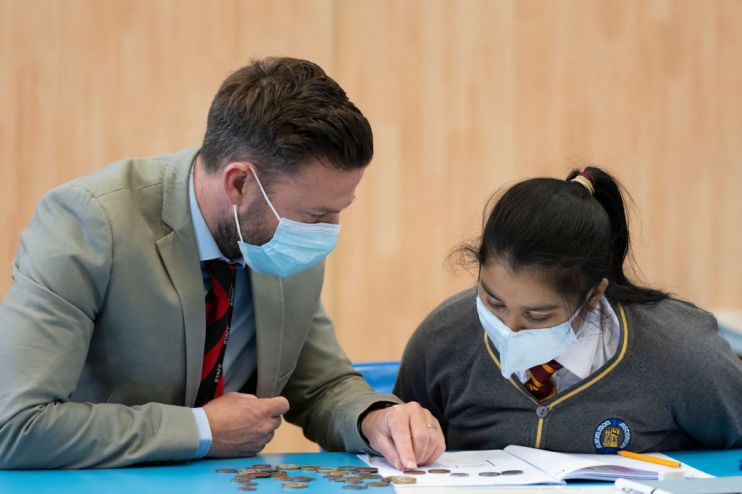Online school has been a blemish for kids learning but hybrid could be a safety net

Earlier this week, Boris Johnson announced kids would once again be free to take off their masks while at school. But with the Omicron variant still sweeping through the country, some schools have defied the Prime Minister and will keep the rules in place.
The uncertainty all of us have had to live through has been excruciating, but the constant toing and froing over kids’ education has caused pervasive angst among students and their parents.
The threat of school closures in January and the ongoing fears of an outbreak have left a lasting impact. The negative impact that full-time remote education is having on our children is well-documented. Ofsted’s recent Annual Report detailed the many ways in which our children are being affected, writing that “loneliness, boredom and misery became endemic among the young.” A recent NHS survey looking at the mental health of young people found that 17.4 per cent of children aged 6-16 had a probable mental disorder in 2021, up from 11.6 per cent in 2017.
On top of this, there’s a worrying trend of fully remote learning exacerbating existing disparities within society. One of the key findings from an education report my company recently released with Kantar was that 46 per cent of children from high-income households felt they’d catch up on pandemic-related learning gaps, compared to only 21 per cent of their less affluent peers. 25 per cent of children from low-income households experienced a learning gap in English, for example, but this was only the case for 12 per cent of children from high-income households.
Of course, we all want schools to be open completely, with no threat of closure. We want kids in classrooms and teachers in front of them. But clearly, mitigations are still needed in some circumstances, and a long-term plan for hybrid education should be in place. Not only for the sake of the pandemic, but to give children who genuinely benefit from more independence the freedom many of us have discovered with working from home.
This requires the proper infrastructure for hybrid learning, so there can more easily be a mix of in-person and online teaching whenever it’s needed.
Perhaps surprisingly, the same education report we released showed a genuine appetite amongst kids for hybrid learning. Thirty-three per cent of children preferred having some remote element to their education. Naturally the in-person model is still most favourable for both teachers and students, as replicating interactions and connectivity is harder to do online, but the data shows that hybrid learning can at least be a viable alternative.
I’m not for one second saying that online learning doesn’t have major setbacks. Any parent who remembers sharing the family laptop, dodgy internet connectivity, and juggling professional work with homeschooling, will attest to this. But those first lockdowns were uncharted territory. As Satya Nadella, Microsoft’s CEO, put it, we saw “two years’ worth of digital transformation in two months.”
Looking at other sectors, new technology has both helped to solve many problems associated with the pandemic and paved the way for long-lasting positive benefit. This is what the education sector needs to do – turn to tech and get children learning from anywhere.
